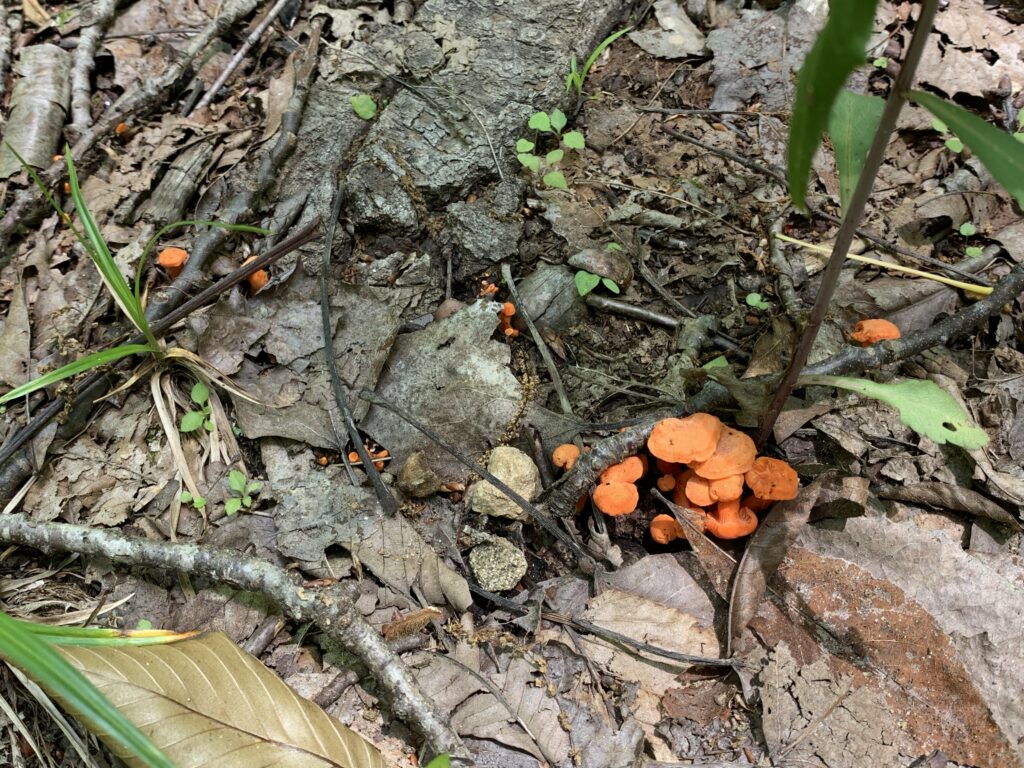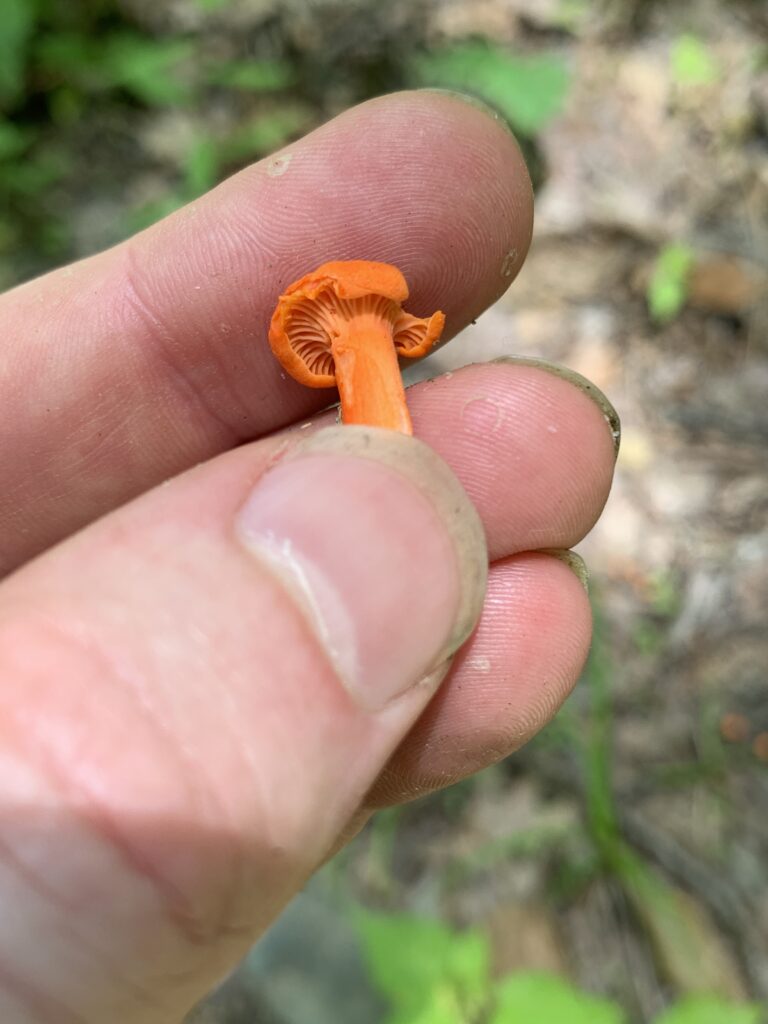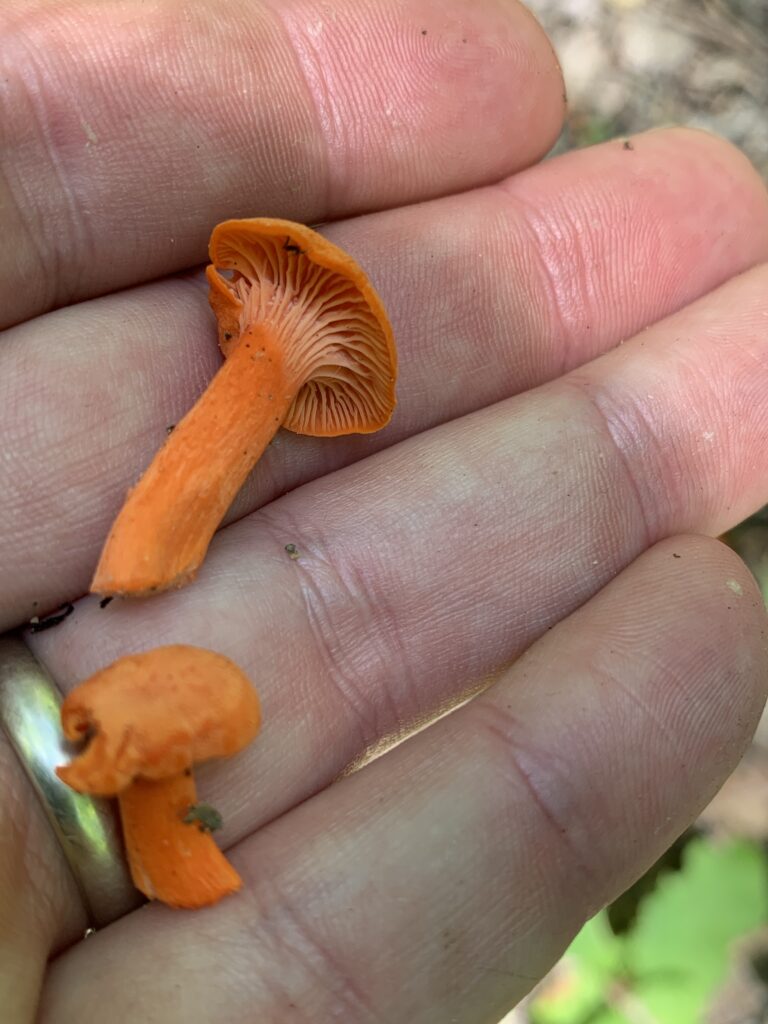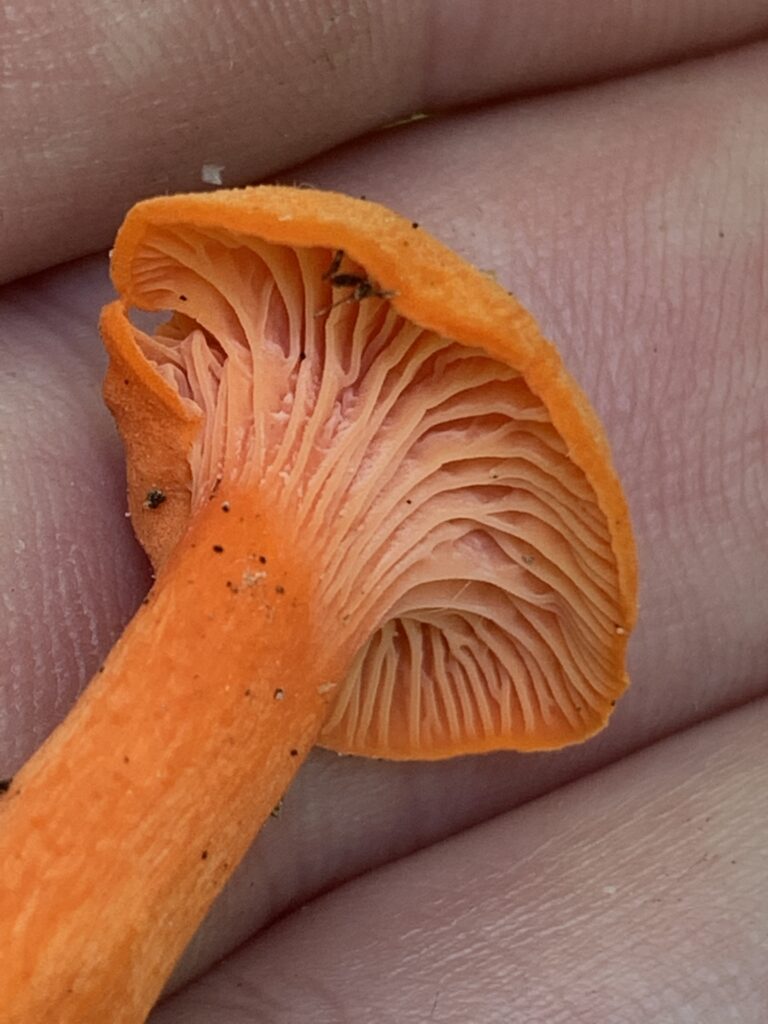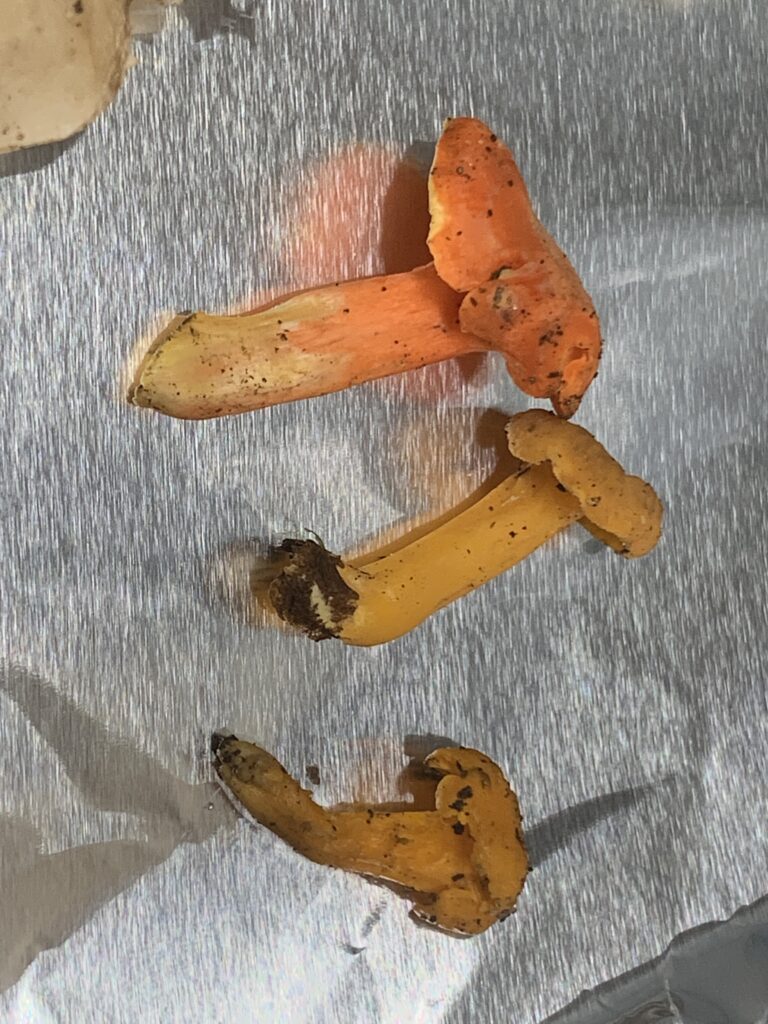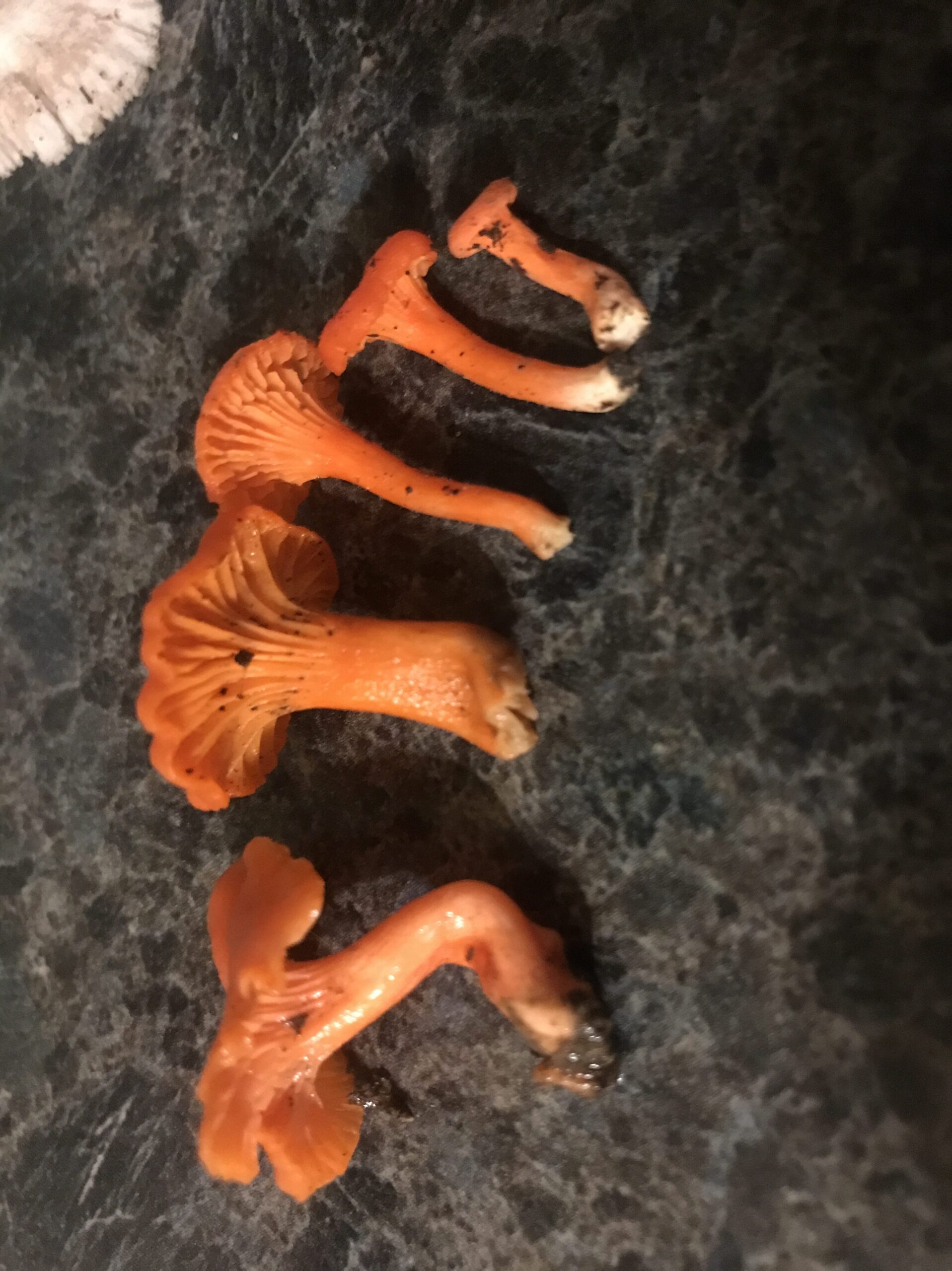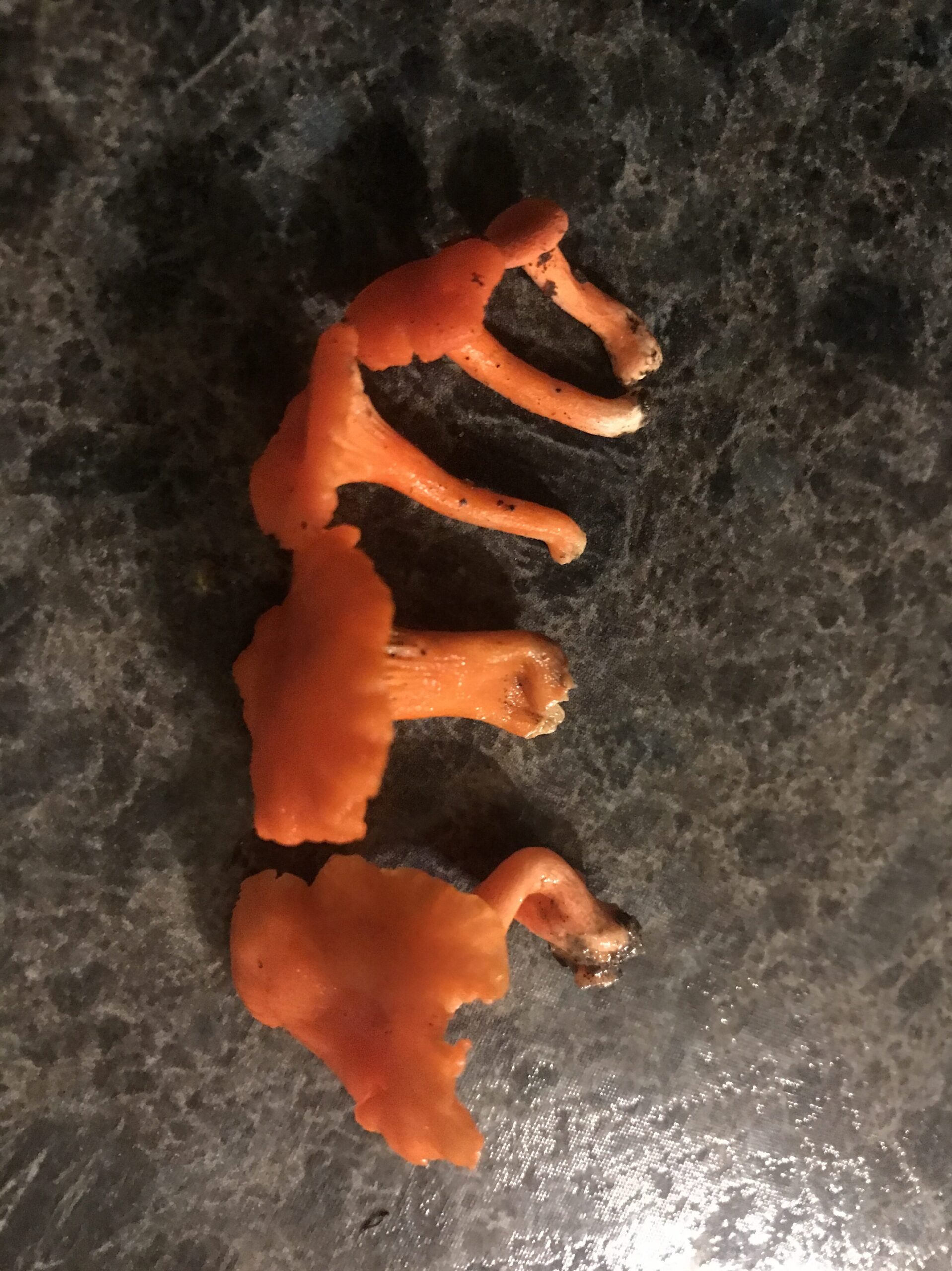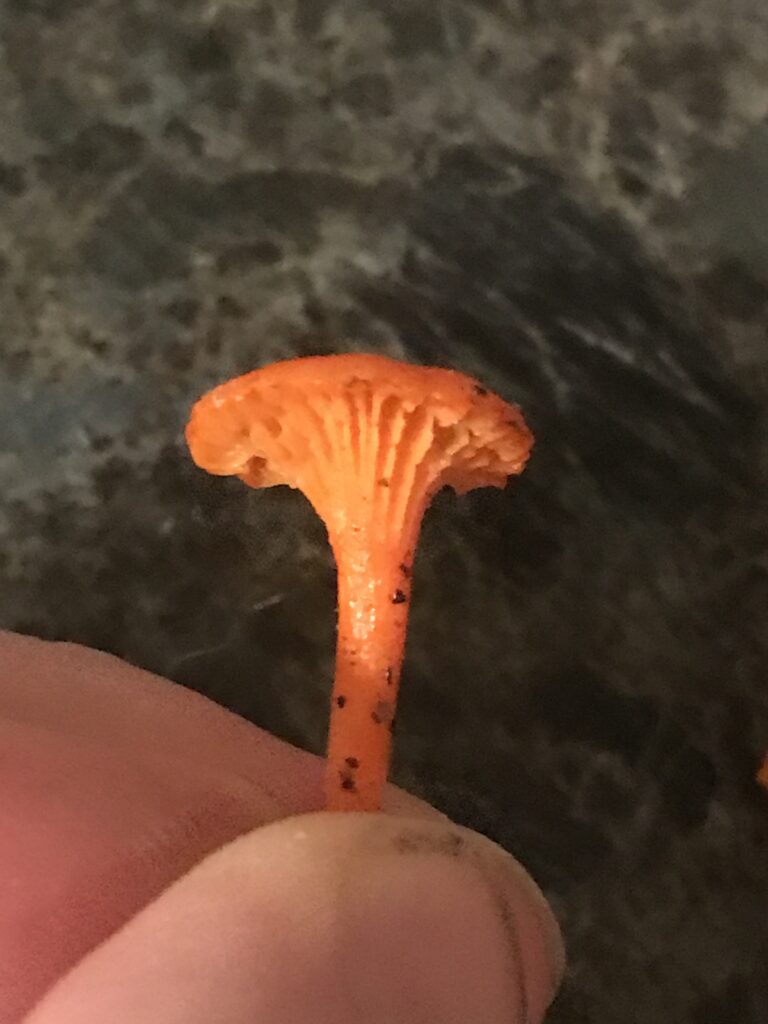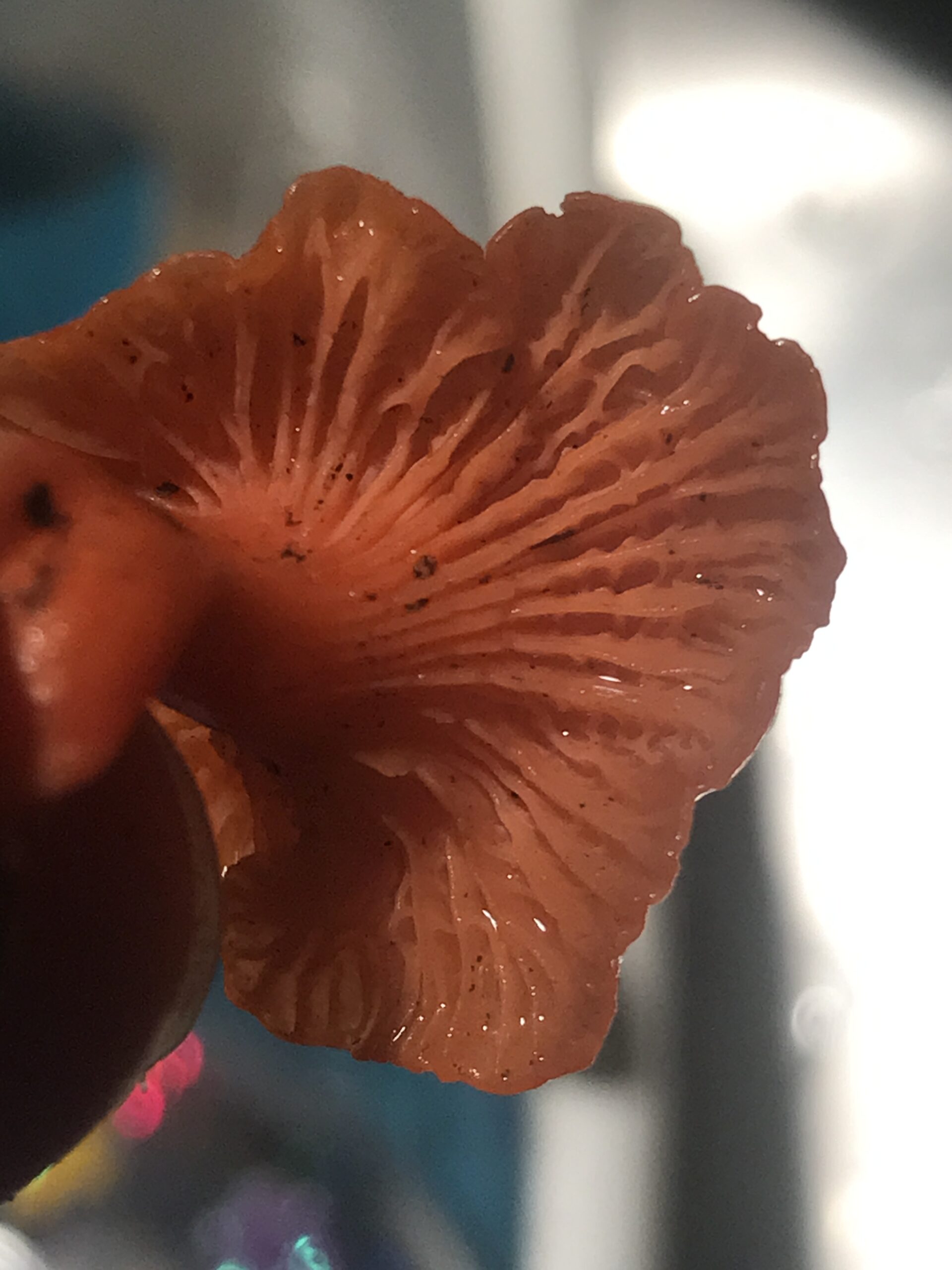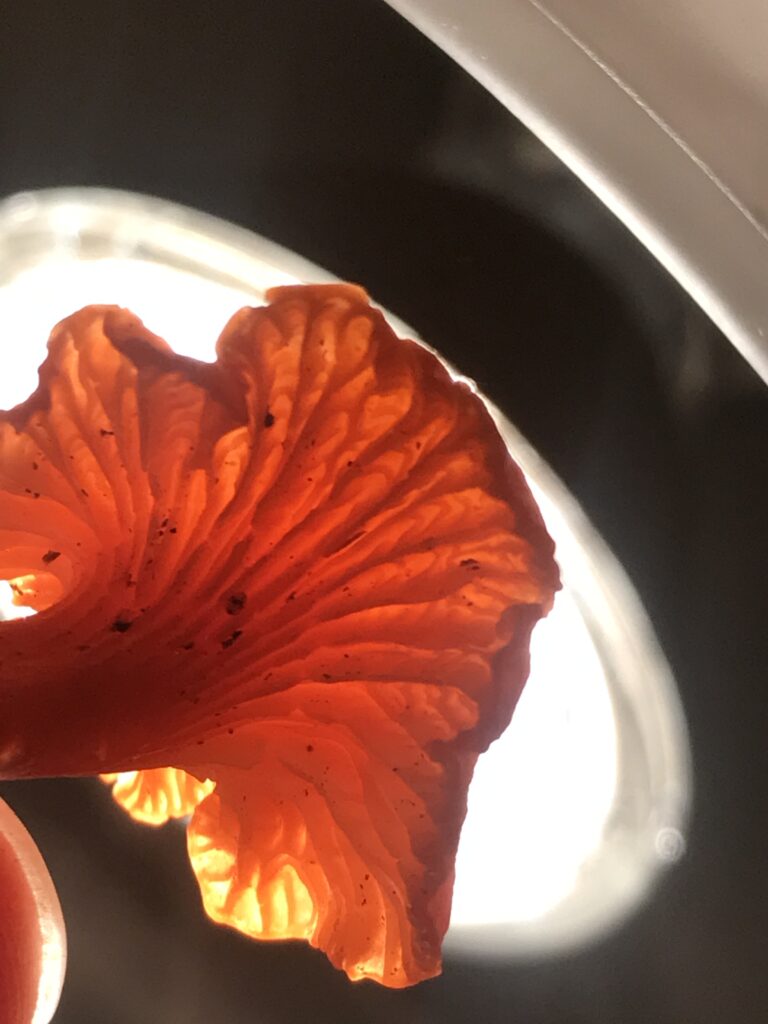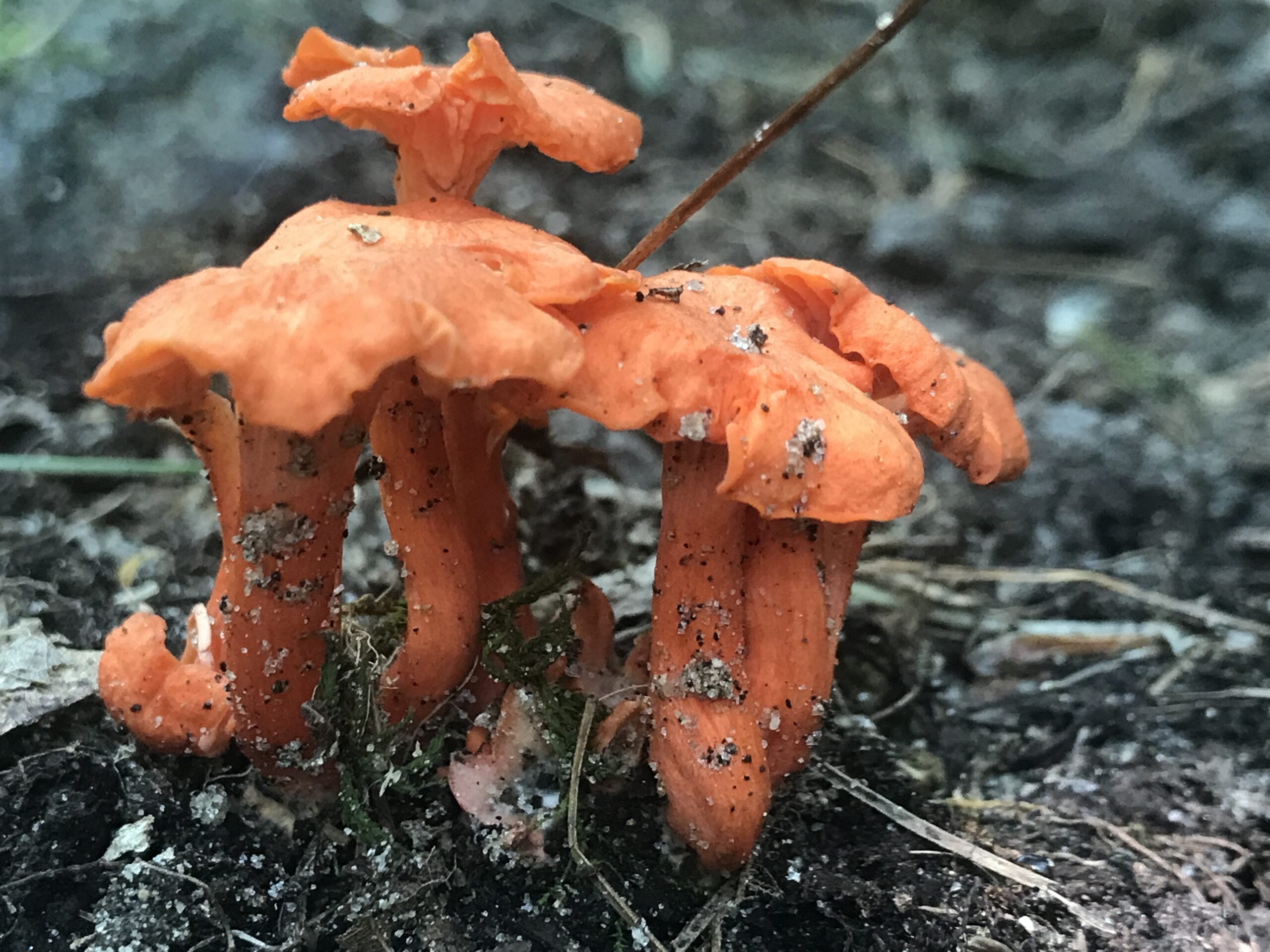| Ecology & Habitat | Mycorrhizal, Growing Gregariously/Trooping(Many individuals in a small area), and Clustered (arising from a common base) It can be found growing in forested areas along trail edges and steam banks. |
| Flesh | Bright orange to reddish-orange, no notable bruising. |
| Cap | Internal flesh is stringy and is a slightly lighter shade of orange than the cap outer surface. |
| Gills | Bright orange or reddish-orange, closely matching cap color. No notable bruising. "Gills" are decurrent, but are not true gills. They are instead often referred to as "false gills" and are simply raised ridges of flesh along the underside of the cap, running slightly down the stem. |
| Stem | Bright orange or reddish-orange stem, color closely matches cap color. No notable bruising. |
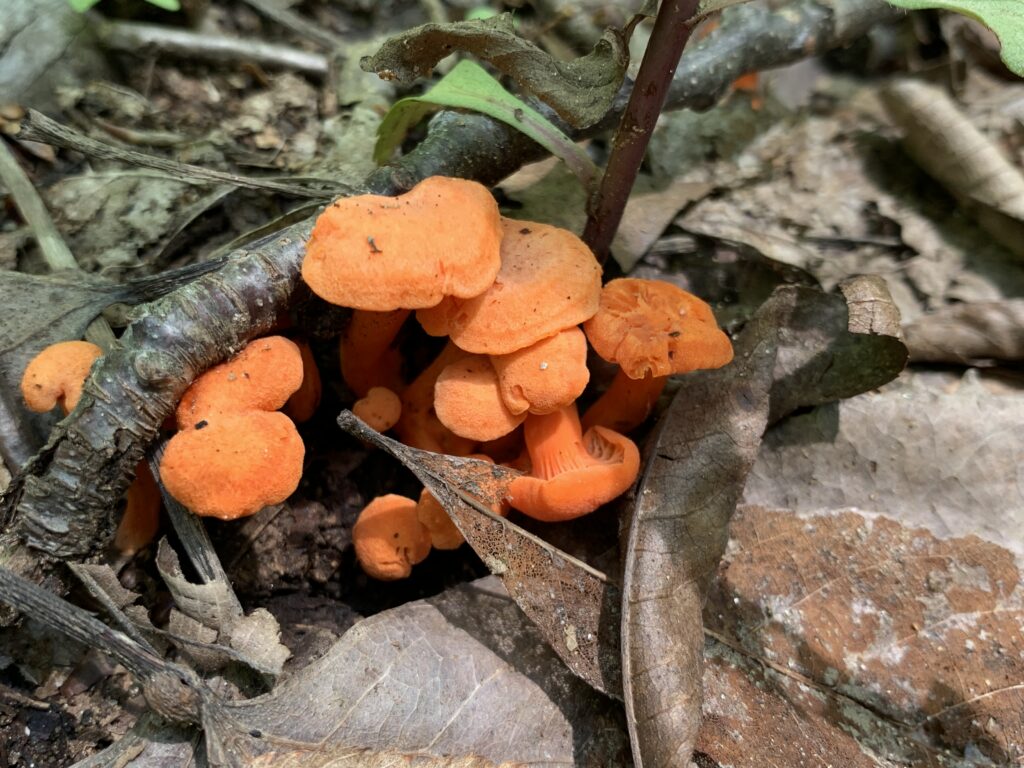
Commonly called the Cinnabar Chanterelle. This mushroom is characterized by its bright red-orange color and its funnel-shaped cap. The cap is smooth, and the stem is thick and sturdy. The “false gills” are forked and run down the stem. These false gills are simply ridges in the surface flesh and are not actual separate structures. It’s a delicious and peppery edible mushroom that is highly sought after by mushroom hunters and chefs alike. There are several some look-alikes, like the “fales chanterelle”, or perhaps a very small and young cluster of jack-o-lantern mushrooms. However, with proper identification, Cantharellus cinnabarinus is a safe and delicious addition to your meals.
